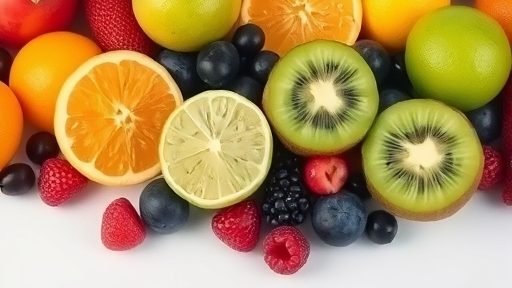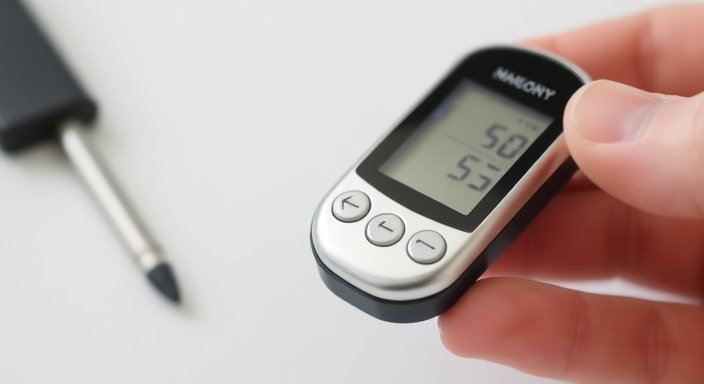When managing diabetes, maintaining stable blood sugar levels is crucial. While fruits are generally considered healthy and packed with vitamins, fiber, and antioxidants, some contain high levels of natural sugars and carbohydrates that can cause significant spikes in blood sugar. In this article, we’ll explore 10 fruits that can make it harder to control your diabetes and provide tips for managing your fruit intake.
1. Grapes
Grapes are small, sweet, and convenient to snack on, but they’re also high in sugar. One cup of grapes contains approximately 23 grams of natural sugar, primarily fructose, which can rapidly elevate blood sugar levels. If you love grapes, consider limiting your portion size or substituting them with lower-sugar fruits like berries, which are higher in fiber and less likely to cause spikes.
2. Bananas
Bananas are rich in potassium and other nutrients, but they also have a high carbohydrate and sugar content. A medium banana contains about 27 grams of carbs and 14 grams of sugar. The riper the banana, the higher its glycemic index, meaning it can quickly raise blood sugar. Green or less ripe bananas are a better option as they contain resistant starch, which has a slower effect on blood sugar levels.
3. Watermelon
Watermelon is hydrating and refreshing but ranks high on the glycemic index. Although it’s mostly water, its natural sugar content can cause blood sugar to rise rapidly. A serving of watermelon contains about 9 grams of sugar, and its low fiber content doesn’t do much to slow sugar absorption. Pairing watermelon with a source of protein or healthy fat, like nuts, can help reduce its glycemic impact.
4. Pineapple
Pineapple is a tropical fruit known for its sweet and tangy flavor, but it’s another fruit to be cautious with. Just one cup of pineapple chunks contains around 16 grams of sugar. Its low fiber content means the sugar is absorbed quickly, which can cause blood sugar spikes. If you enjoy pineapple, consider mixing small portions into smoothies with leafy greens or pairing it with a protein-rich snack.
5. Mango
Often referred to as the “king of fruits,” mango is incredibly sweet and high in sugar. One cup of mango slices contains nearly 23 grams of sugar, making it one of the highest-sugar fruits. To enjoy mangoes without a significant blood sugar impact, limit portion sizes or eat them alongside protein or healthy fat to slow sugar absorption.
6. Lychee
Lychee is a tropical fruit with a unique flavor, but it’s packed with sugar. One cup of lychees contains a staggering 29 grams of sugar. While it may be tempting to snack on these bite-sized fruits, consuming them in large quantities can lead to rapid blood sugar spikes. It’s best to treat lychees as an occasional indulgence rather than a regular part of your diet.
7. Dried Fruits (Raisins, Dates, etc.)
Dried fruits like raisins, dates, and apricots are concentrated sources of natural sugar. During the drying process, water is removed, leaving behind concentrated sugars and carbohydrates. For example, just a small handful of raisins contains 24 grams of sugar. While dried fruits can be part of a healthy diet in moderation, fresh fruits are a better option for those managing diabetes.
8. Cherries
Cherries may seem like a low-sugar option, but sweet cherries can contain about 18 grams of sugar per cup. Additionally, cherries have a high glycemic index, meaning they can quickly elevate blood sugar levels. Opt for smaller portions or choose lower-glycemic fruits like apples or pears instead.
9. Figs
Figs are naturally high in fiber, which can be beneficial for digestion, but they also contain a lot of sugar. A medium-sized fig has approximately 8 grams of sugar, and many people eat more than one at a time. To minimize their impact on blood sugar, enjoy figs in moderation and pair them with a source of healthy fat, such as cheese or nuts.
10. Papaya
Papaya is a tropical fruit that’s full of vitamins and antioxidants, but it also contains moderate amounts of sugar. One cup of papaya has about 11 grams of sugar. While it’s not as high in sugar as some other fruits on this list, it’s still important to keep portion sizes small and avoid eating it in large amounts.
Tips for Managing Your Fruit Intake
- Choose Low-Glycemic Fruits: Fruits like berries, apples, pears, and citrus fruits have a lower glycemic index and are better options for managing blood sugar.
- Watch Your Portions: Even low-sugar fruits can cause blood sugar spikes if eaten in large quantities. Stick to small portions to stay on track.
- Pair with Protein or Healthy Fats: Combining fruit with protein or fat can help slow sugar absorption and prevent spikes in blood sugar. For example, pair an apple with peanut butter or berries with Greek yogurt.
- Monitor Blood Sugar Levels: Keep track of how different fruits affect your blood sugar by checking your levels after eating. This can help you identify which fruits work best for your body.
- Consult a Dietitian or Doctor: Work with a healthcare professional to create a balanced meal plan that includes fruits while keeping your blood sugar under control.
Conclusion
Managing diabetes doesn’t mean you have to eliminate fruits from your diet entirely. However, understanding which fruits are high in sugar and how they affect your blood sugar levels can help you make better choices. With mindful eating and portion control, you can still enjoy a variety of fruits while maintaining stable blood sugar levels.
Sources
- American Diabetes Association. “Diabetes Superfoods.” https://www.diabetes.org
- Harvard School of Public Health. “Glycemic Index and Glycemic Load.” https://www.hsph.harvard.edu
- Mayo Clinic. “Diabetes Diet: Create Your Healthy-Eating Plan.” https://www.mayoclinic.org
- USDA FoodData Central. “Nutritional Facts for Common Fruits.” https://fdc.nal.usda.gov
- National Institute of Diabetes and Digestive and Kidney Diseases. “Diabetes Nutrition.” https://www.niddk.nih.gov









